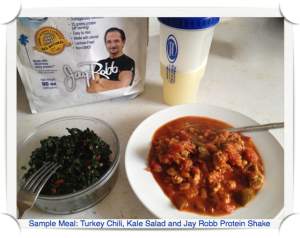How to Gain 20 Pounds of Muscle Mass
Eat a lot!!
Yes, it’s a little more complicated than that, but you will have to eat much more than you are used to eating. I have to admit the weight gaining phase is much more fun than the weight loss phase, but you do have to follow some guidelines. Something I should mention before I go any further is that every person is different. Genetics, training program, metabolism, etc, can all play a significant role in your results. The nutritional guidelines I’m going to offer you are just a jumping off point and will most likely need to be modified to fit you. There are many schools of thought as to how to go about gaining muscle mass, this just happens to be the way that I found to be most effective for me.
 Calories: Before we start eating everything under the sun in order to gain weight, we first have to figure out how many calories we need to take in each day in order to gain weight with efficiency. Yep that’s right, you can’t just go out and eat cheese burgers until you fall into a food comma. You’ll have to put together a better plan than that!
Calories: Before we start eating everything under the sun in order to gain weight, we first have to figure out how many calories we need to take in each day in order to gain weight with efficiency. Yep that’s right, you can’t just go out and eat cheese burgers until you fall into a food comma. You’ll have to put together a better plan than that!
The first thing you’ll need to to is figure out your Resting Metabolic Rate (RMR), the amount of calories you’d burn in a day if you were to just sit around doing nothing. There are a few different ways to figure this out, but why break out the calculator just yet when you’ve got the interent. You can just go to this RMR Calculator link, punch in your info and it will tell you your basic RMR. Mine was roughly 1,800 calories. That means that if I ate 1,800 every day and just sat on the couch watching TV, I’d stay the same weight.
RMR = 1,800 calories
Now depending on my daily activity, I would have to calculate the amount of calories I burn on a normal day doing my job as a personal trainer and multiply that times my RMR. This number can vary depending on who you talk to, but I went with a safe 1.5 x RMR. Which means if I work a normal day I would burn around 2,700 calories. Now, if you work in an office, you might want to go with maybe 1.3 x RMR or if you work manual labor maybe 1.7 x RMR.
RMR x Daily Activity = 2,700 calories
The last thing I had to figure out was how many calories I burn during my workout (which remember, were only 3 times per week during my weight gain phase). I estimated around 200 to 300 calories.
(RMR x DA) + Workout = 3000 calories
Since I was working out 3 days a week I needed to take the average between my workout and non-workout days for the entire week. Workout days plus non-workout days and divide that by 7 days in a week.
((3000 x 3) + (2700 x 4)) ÷ 7 = 2828 calories
Wow that’s a lot of math!! We’re almost there, I promise. 2828 is the amount of calories I would have to consume in order to maintain my current weight, if I stuck to this same daily activity and workout schedule. Make sense? Now I need to add more calories so I’d have a surplus of calories in order to gain weight. I decided that 250 calories should be enough for me to see some weight gain. If I didn’t, I would just add more. If I was gaining too much fat, I would just ease off.
2828 + 250 = 3078 calories
Yay!! We made it! All I needed to do was eat a little over 3000 calories a day and I’d start gaining muscle. Easy breezy! Not a problem! Wait, what kinds of food did I need to eat? How often did I need to eat? Could I even eat that many calories without making regular stops at Carl’s Junior? I guess I still had more work to do.
It’s time for you to figure out how many calories you’d need to eat to put on some lean muscle mass and then we’ll talk about how to do the rest in the next post.
Excerpt from the next blog to get you thinking:
“Macronutrients. Without getting too specific, macronutrients consist 3 things: Proteins, Carbohydrates and Fats. Now that you know how many calories to eat, you’ll now have to break down the amounts of macronutrients you’ll need to achieve your weight gain goals. It’s actually a lot more simple than you’d think.”
